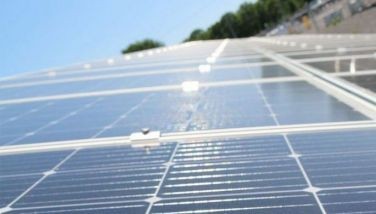Philippines’ investment grade rating affirmed
MANILA, Philippines — International credit rating agencies have affirmed the investment grade rating of the Philippines amid key challenges including an acceleration of inflation that leads to higher global interest rates.
After affirming the Philippines’ BBB+ rating, two notches above minimum investment grade, S&P raised the country’s gross domestic product (GDP) growth forecast for this year to 7.1 percent, shortly after reducing it to 6.3 instead of 6.5 percent early this month.
Vince Conti, economist at S&P, attributed the upgrade to the stronger-than-expected 7.6 percent expansion in the third quarter from 7.5 percent in the second quarter.
“Q3 GDP growth in the Philippines far outperformed our expectations, driven by continued strong domestic demand, even in the face of high inflation. This led us to raise our GDP growth forecast for 2022,” S&P economist Vince Conti told The STAR.
The country booked a GDP growth of 7.7 percent from January to September this year, slightly above the 6.5 to 7.5 percent target set by the Cabinet-level Development Budget Coordination Committee (DBCC).
The Philippines continues to maintain a robust recovery after bouncing back from the impact of the COVID-19 pandemic with a GDP growth of 5.7 percent last year after shrinking by 9.6 percent in 2020 due to global health crisis.
For next year, S&P lowered anew its GDP growth forecast to 5.2 percent after slashing it to 5.7 instead of 6.5 percent due to significant headwinds.
“On the external demand side, a global growth slowdown is widely expected and will weigh on Philippine exports. On the domestic side, the lagged effects of this year’s monetary policy tightening will weigh on consumption and investment, while pent-up demand from the pandemic would not be as much of a growth driver as it was this year,” Conti said.
The debt watcher said that elevated inflation as well as the ongoing tightening cycle by the central bank would impact on economic growth moving forward.
“This is likely to constrain private consumption,” S&P warned.
S&P sees inflation accelerating to 5.5 percent for this year from last year’s 3.9 percent before easing to 4.3 percent in 2023 and 2.7 percent in 2024.
This is slightly lower than the latest forecasts of the BSP at 5.8 percent in 2022, 4.3 percent in 2023, and 3.1 percent in 2024.
BSP Governor Felipe Medalla said that monetary authorities remain committed to its price stability mandate by working to promote predictable and low inflation rates.
“Well-managed inflation provides an enabling environment for strong and sustainable economic growth, as well as better living standards for all Filipinos,” Medalla said.
The BSP chief said that the recent policy rate adjustments are expected to enhance growth in the medium-term as they curb demand-driven inflation and rein in expectations.
“Prolonged high inflation may have adverse effects on spending, confidence, and therefore, growth,” Medalla said.
In October, Fitch Ratings affirmed the BBB credit rating, a notch above minimum investment grade, and negative outlook of the Philippines, as it expects the country’s output to exceed pre-pandemic levels in the second half of the year.
The debt watcher noted that the country’s GDP growth is expected to slow down starting in the second half amid monetary tightening, high imported inflation and weaker global demand.
“We forecast real GDP growth of 6.8 percent in 2022 on strong domestic demand, reflecting normalization of economic activity after the pandemic and the government’s investment program,” Fitch said.
It also lowered its GDP growth forecast for 2023 to 5.5 percent instead of seven percent but sees the economic output of the Philippines expanding at a faster pace of 6.2 percent.
Another downside risk, Fitch said, is that the BSP may raise benchmark interest rate beyond its projected 5.25 percent as it sees inflation quickening to 5.5 percent this year before easing to 3.5 percent next year.
“Further growth risks stem from potential economic scarring from the pandemic, in particular, due to learning losses. We think its inflation-targeting framework remains credible and we expect rates to rise further, potentially beyond our assumption of 5.25 percent by end-2022, if domestic inflationary pressure continues to build,” Fitch said.
It also affirmed the negative outlook of the Philippines due to the country’s medium-term growth prospects, fiscal adjustment path, and external buffers in an environment of higher interest rates, weaker external demand, and higher commodity prices.
Likewise, Moody’s also affirmed its Baa2 rating – a notch above minimum investment grade – and stable outlook for the Philippines as the challenging global credit conditions are not expected to derail the country’s recovery from the impact of the COVID-19 pandemic.
Although the severity of the pandemic shock has led to an erosion in the rating agency’s assessment of economic strength, Moody’s sees sufficient momentum to support real GDP growth projection of 6.6 percent for 2022 and 6.2 percent for 2023 as price pressures are set to moderate as commodity prices ease from peaks recorded earlier this year.
“The rating action is driven by Moody’s view that the challenging global credit conditions will not derail the Philippines’ ongoing recovery from the coronavirus pandemic,” Moody’s said.
- Latest
- Trending




























